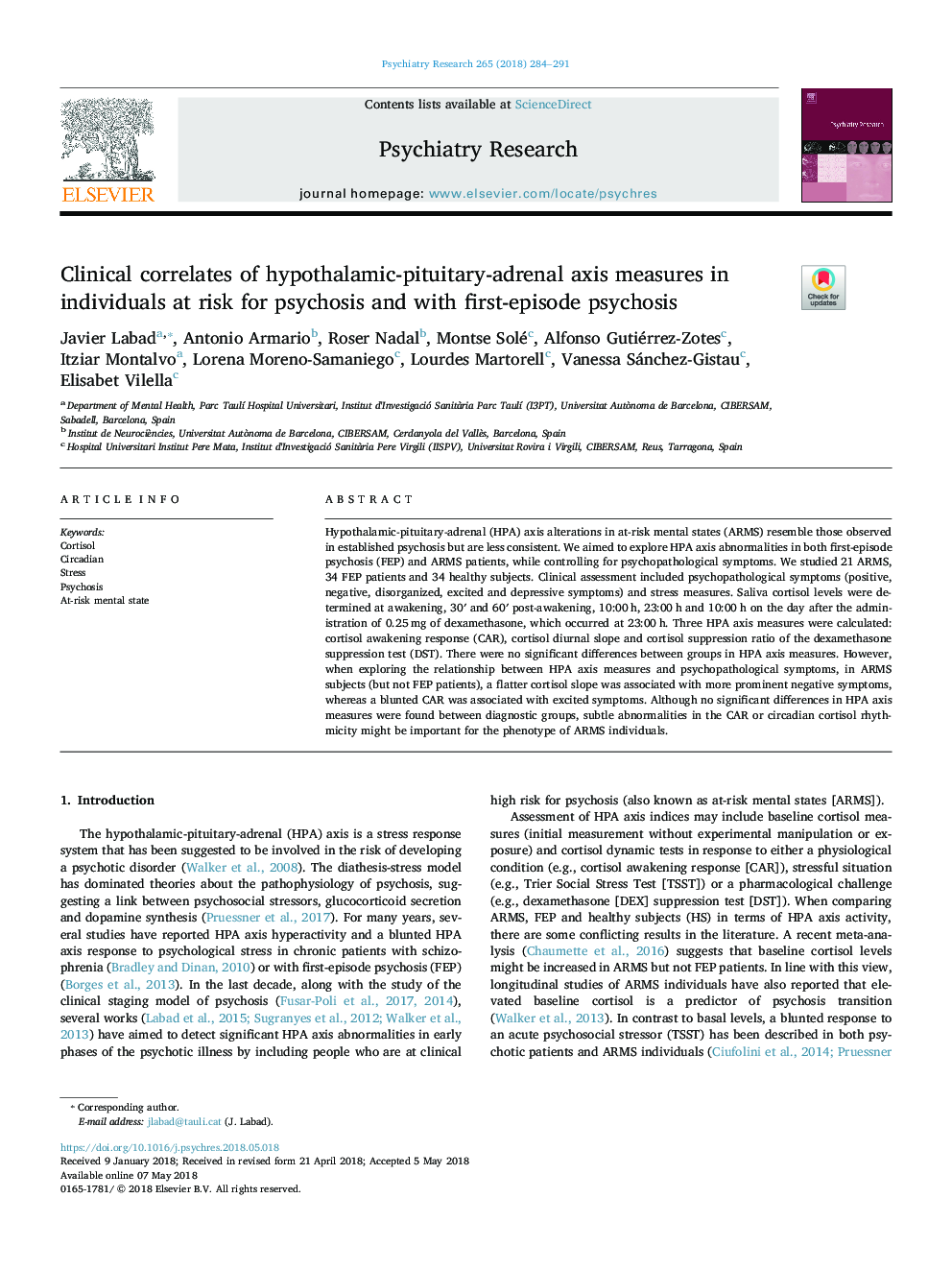| Article ID | Journal | Published Year | Pages | File Type |
|---|---|---|---|---|
| 6811500 | Psychiatry Research | 2018 | 8 Pages |
Abstract
Hypothalamic-pituitary-adrenal (HPA) axis alterations in at-risk mental states (ARMS) resemble those observed in established psychosis but are less consistent. We aimed to explore HPA axis abnormalities in both first-episode psychosis (FEP) and ARMS patients, while controlling for psychopathological symptoms. We studied 21 ARMS, 34 FEP patients and 34 healthy subjects. Clinical assessment included psychopathological symptoms (positive, negative, disorganized, excited and depressive symptoms) and stress measures. Saliva cortisol levels were determined at awakening, 30â² and 60â² post-awakening, 10:00â¯h, 23:00â¯h and 10:00â¯h on the day after the administration of 0.25â¯mg of dexamethasone, which occurred at 23:00â¯h. Three HPA axis measures were calculated: cortisol awakening response (CAR), cortisol diurnal slope and cortisol suppression ratio of the dexamethasone suppression test (DST). There were no significant differences between groups in HPA axis measures. However, when exploring the relationship between HPA axis measures and psychopathological symptoms, in ARMS subjects (but not FEP patients), a flatter cortisol slope was associated with more prominent negative symptoms, whereas a blunted CAR was associated with excited symptoms. Although no significant differences in HPA axis measures were found between diagnostic groups, subtle abnormalities in the CAR or circadian cortisol rhythmicity might be important for the phenotype of ARMS individuals.
Related Topics
Life Sciences
Neuroscience
Biological Psychiatry
Authors
Javier Labad, Antonio Armario, Roser Nadal, Montse Solé, Alfonso Gutiérrez-Zotes, Itziar Montalvo, Lorena Moreno-Samaniego, Lourdes Martorell, Vanessa Sánchez-Gistau, Elisabet Vilella,
